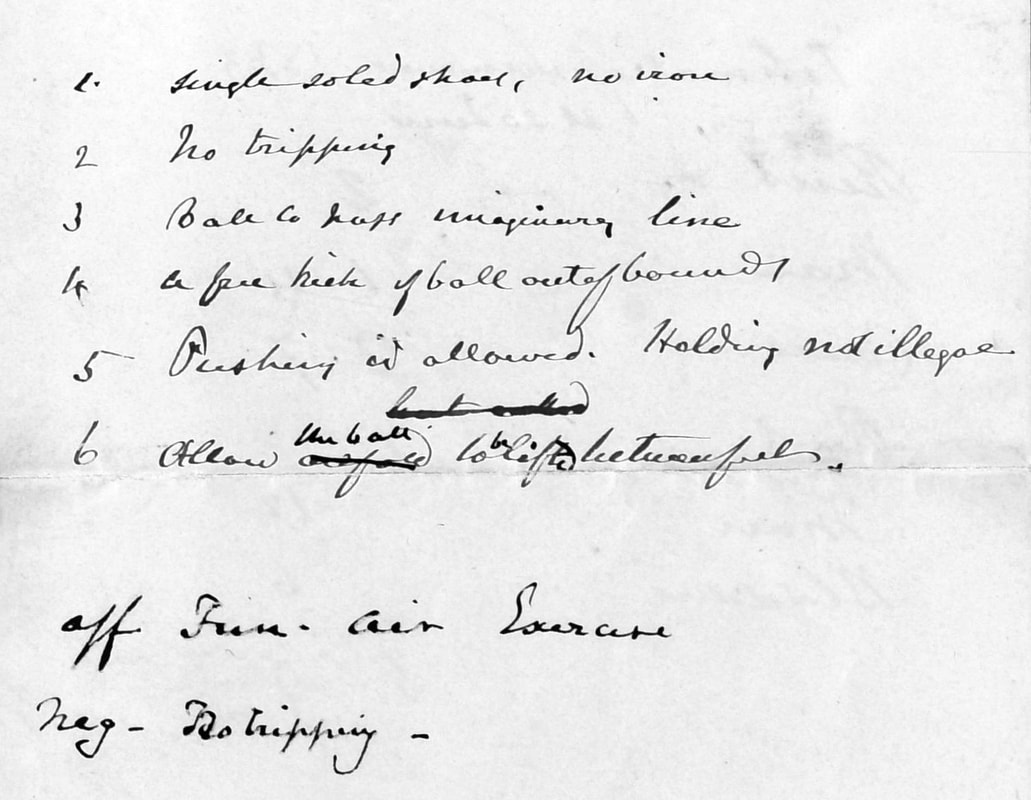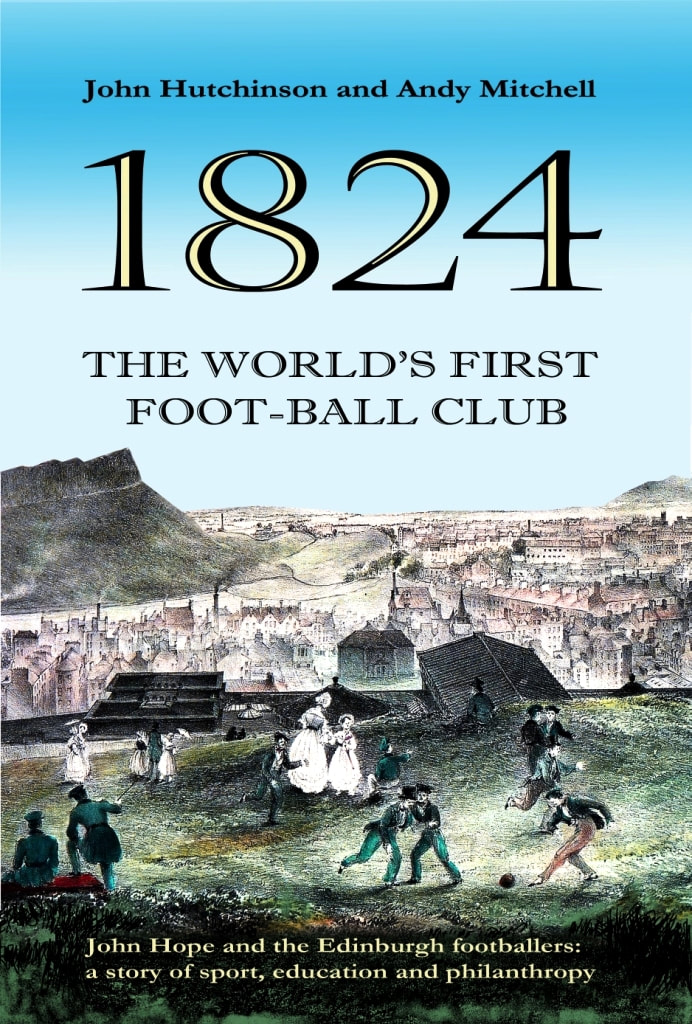Pictured above is the world's earliest known set of football rules, written by John Hope in Edinburgh in 1833 to guide the members of his Foot-Ball Club which had been established in 1824. This crucial document now resides in the National Records of Scotland, and is a priceless piece of footballing history.
It is worth examining why Hope felt it necessary to lay down the rules in writing, and what they implied for the players.
By 1833 the club had been going for nine years, it was buoyant and attracting new recruits from a variety of backgrounds and schools. Therefore many of the players may not have had the implicit understanding of how to play and how to behave that former High School boys would have had.
The club's membership records indicate that football games involved up to 40 men playing at the same time, wearing caps to distinguish sides. Their football was of a robust and healthy nature, played within a defined area on rough grass fields in summer and winter. All games were played within the club membership as there simply was no other club with which to play competitive matches.
Their football was clearly a competitive game with a code of behaviour to avoid serious injury - the members were young men who needed to be able to walk to work or study the next morning. Their game had progressed from the schoolboy pastime of the High School Yards, and Hope probably felt he needed to establish some guidelines. His rules therefore appear to mark a step on football's evolutionary path from its often violent origins in the folk games of a less sophisticated age to the more sanitised, codified form which emerged in the 1850s. Hope wrote in his own hand:
- Single soled shoes, no iron
- No tripping
- Ball to pass imaginary line
- A free kick if ball out of bounds
- Pushing is allowed. Holding not illegal
- Allow the ball to be lifted between fields
Underneath, he noted the attributes of the game:
Aff [affirmative] Fun, air, exercise
Neg [negative] No tripping
These rules are brief, and leave much to the imagination, but they are highly significant not just in what they say, but what they do not say. In many respects this is similar to the early editions of Rugby School's laws in the 1840s, which stated they were to be regarded 'rather as a set of decisions on certain disputed points in football, than as containing all the Laws of the Game, which are too well known to render any explanation necessary.'
Rules three and four introduce the concept of a method of scoring. The game needed winners and losers so a goal (or 'hail') was scored when the ball passed over the 'imaginary line', and we know from the financial records that there were painted hail sticks which operated as goalposts. Similarly, to stop the play wandering off into the distance, this imaginary line extended right round the pitch; so, if the ball went beyond the agreed boundary it would be retrieved and kicked back into play.
Rule five is interesting as it permits an element of physical aggression, allowing players to push and hold their opponents (as rugby allows to this day within defined circumstances such as tackling and scrums). However, pushing and holding are a long way from the 'no holds barred' approach of traditional folk football.
The final rule is harder to analyse, particularly as this is the only rule that Hope redrafted. He crossed out some words and perhaps had difficulty in condensing accepted practice into a short sentence. It appears to mean that the only time the ball could be lifted, i.e. picked up or handled, was when it was out of play 'between fields'. If that interpretation is correct it confirms that this was a forerunner to the non-handling code that ultimately became association football.
While Hope's football rules are brief and open to interpretation, it has to be remembered he was the first to attempt the task. This was decades before the versions created by footballers at Cambridge (1848), Sheffield (1858), the Football Association (1863) and several prominent schools. He was a man ahead of his time.
The story of The World's First Foot-Ball Club is on sale now, price £11.99.


 RSS Feed
RSS Feed